Week Three of the ‘Ceasefire.’ Part 2: The Palestinian Question on the Ground
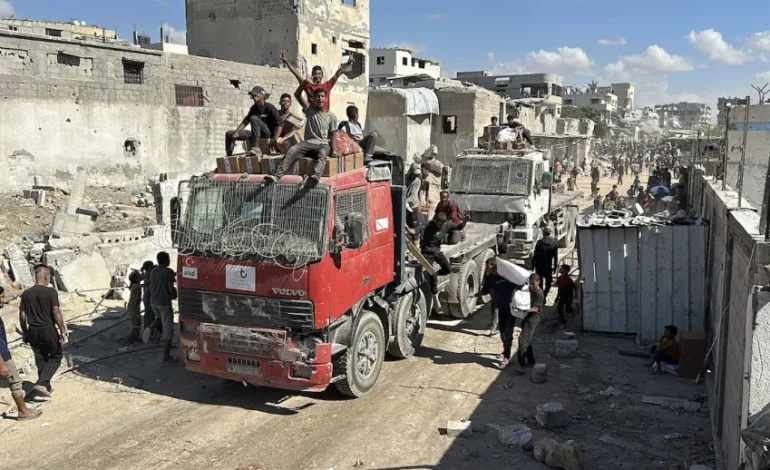
Gaza’s guns may be quieter, but the emergency isn’t. In the third week of the truce, access, law, and basic survival collide — and the gap between diplomatic language and lived experience is still a canyon.
From day one of the pause (Oct. 10), the picture was always split-screen. On one side: a White House–backed framework, Arab mediation, hostage–prisoner exchanges, and a big promise that this time might be different. On the other: a Strip flattened by two years of war, a siege-era logistics map, and all the hard governance questions punted to later phases. That was the throughline of the early analysis — a “fragile pause” with more choreography than capacity, and more ambition than agreed mechanics.
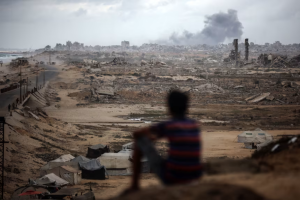
A smoke plume billows following an Israeli bombardment on the Gaza Strip as seen from northwest of Nuseirat refugee camp in Gaza, on October 9, 2025 (Majdi Fathi / NurPhoto / Getty Images)
A week later, we dug into the humanitarian realities and warned that a “ceasefire” without fuel, pipes, rubble-removal gear, and open crossings is just a slower-motion crisis. What matters for ordinary people, we wrote then, isn’t abstract “stability,” but whether water is safe, clinics are open, and aid reaches neighborhoods without being blocked or shot at.
By Week Three (Oct. 27), we turned to the politics above the waterline — the “Palestinian question in high places.” Roadmaps and interim committees are nice, but they don’t fix UN-defined obligations around access, de-occupation, and accountability. Without those, any “Phase 2” looks like kicking the can while people queue for bread and dialysis.
The pause hasn’t been peace. The United Nations human rights machinery’s baseline is stark. In September, the UN Human Rights Council’s Commission of Inquiry said Israel has committed genocide in the Gaza Strip — a finding Israel rejects but that now sits in the UN record and shapes state obligations going forward. Special Rapporteurs have echoed that frame, warning that starvation and obstruction of aid may amount to prohibited acts. These are not throwaway lines; they’re legal tripwires that should be guiding how crossings, authorizations, and reconstruction get handled during the truce.
The toll of two years is captured in consolidated assessments and journalism: tens of thousands killed, massive injury, near-total wrecking of water, health, and housing systems, and UN-development projections that rebuilding alone stretches well beyond 2040 under current constraints. Recent tallies pulled together by Al Jazeera’s data team sketch the scale: more than 67,000 Palestinians killed, famine confirmed by the Integrated Food Security Phase Classification in parts of Gaza, 89% of water and sanitation infrastructure damaged, and nearly all homes destroyed or damaged. Those quite conservative figures line up with sectoral reporting from WHO, OCHA, and UNOSAT that many agencies have been citing in their field briefs.
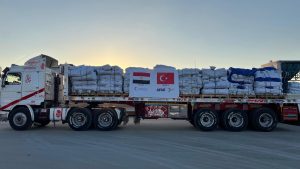
Aid mechanics remain the choke point. Even with a ceasefire in place, the operating picture keeps oscillating: crossings opening and closing, approvals granted and then withdrawn, “dual-use” lists stretching into absurdity, and convoy coordination that can flip from green to red on short notice. UNOPS, which supports the UN’s 2720 mechanism to shepherd supplies, describes a response trying to scale amid severe explosive-ordnance risk and fragmented access. The functionality problem isn’t just political; it’s practical — UXO, rubble, fuel scarcity, and broken pipes mean even approved cargo can’t always reach people reliably.
A week-three ceasefire snapshot still shows life-safety indicators far from minimum humanitarian standards. Amnesty International’s July brief — which warned that militarized, non-UN distribution schemes were deadly and unlawful — feels uncomfortably relevant, as do warnings from Refugees International that hunger is now the biggest spoiler of any political deal.
Some flows are up, but the mix is wrong. One of the most consistent signals from field NGOs is that trucks are moving, yet too many are commercial, not humanitarian — which means availability may rise while affordability doesn’t. As Shaina Low, the Norwegian Refugee Council‘s Communications Adviser in Palestine, puts it:
“The Norwegian Refugee Council has been unable to bring any aid into Gaza since before March 2, 2025, when Israel imposed a complete siege on the Gaza Strip. Since then, Israel has eased the siege but prevented dozens of international NGOs, including NRC, from bringing in aid. We continue to have our requests rejected on the basis that we are “not authorized at this time.” We believe that this is tied to Israel’s new INGO process, despite the fact that our registration under the previous system remains valid, as we have not yet received an answer on our pending application.
Conditions in Gaza are not as bad as they were prior to the ceasefire, but not nearly enough aid is reaching the people in desperate need after two years of death, destruction, and displacement. The majority of trucks entering Gaza are not humanitarian but are commercial. While this has led to increased availability of items on the local market, many people simply cannot afford to purchase these items, as they have not had a steady income for two years, and many prices remain well above the pre-October 7 prices… NRC has 200 trucks and $4 million USD worth of aid sitting in Egypt.”
That tracks with OCHA’s own updates noting approvals “in the pipeline,” while many NGO consignments are still being denied on the grounds organizations are “not authorized.”
Jamil Sawalmeh, Country Director for ActionAid Palestine, explained the new INGO registration system:
“I think we have enough evidence to believe that is politically motivated. As Israel continued its genocidal war in Gaza, they also wanted to drain any source of support for Palestinians in the West Bank and Gaza, across the Palestinian territory. And that’s why they decided to crack down on international organizations, because we are leading the humanitarian response in Gaza and also responding in the West Bank. The change in the process itself is that now we have an interministerial committee that looks into our registration applications. It’s not only one ministry. It used to be the Ministry of Social Affairs, which was the authority issuing registration for international organizations. But now the fact that we have an interministerial committee formed of 6 different ministries looking into these registrations and headed by the Ministry of Diaspora in the Israeli government… The type of information that we are asked to allow is quite extensive, and it’s not the same as what was required as part of the original registration process before the new procedure was introduced. But the most problematic piece of that information is the request to share information of national staff. Particularly those working in Gaza… There was a joint position on this, not to share that type of information, because it’s, of course, a clear breach of the data protection acts in the EU, as well as it represents a major safety and security breach for our staff operating on the ground in Gaza, in the West Bank… Israel is now… using this procedure to prevent humanitarian organizations from transporting aid into Gaza without giving them a response on their applications. So far, the vast majority of the organizations that have applied did not receive a response on their application. However, their request to coordinate humanitarian aid into Gaza was rejected.”
The approval regime is the new bottleneck. Humanitarian actors describe a bureaucratic straitjacket — an Israeli INGO registration process that demands sensitive staff data and allows denials without clear timelines. The Norwegian Refugee Council and others warn of applications disappearing into a void even as access requests are rejected for lack of “authorization.” OCHA’s weekly update captures the symptom: dozens of NGO cargo requests denied, thousands of metric tons stuck outside, and only a handful of shelter partners approved to move core items.
Aid that matters is still blocked. Pipes, pumps, chlorine, generators, rubble-clearing kit, fuel — the stuff that makes water safe, unclogs sewage, and resurrects neighborhoods — remains heavily restricted under expansive “dual-use” rules. That’s not academic; it’s why some families return north to check a home, then go back to camps: no potable water, no toilets, no waste management, no clinics. Bushra Khalidi, Palestinian Territory Policy Lead at Oxfam, put the principle simply:
“Improvement from near zero is not how we measure progress in a humanitarian response. Progress is measured by whether people’s needs are met. Whether families have enough food, whether they have clean water, whether they have shelter, whether they have access to medical care, whether they have safety to live with dignity. And by that measure, Gaza is nowhere close. We expected Gaza to be flooded with aid the moment the ceasefire began, but that’s not what we’re seeing. What comes in are the bare basics… What’s missing are the materials that would actually restore life… This is not facilitation. This continues to be deliberate obstruction, and it’s unlawful… Between the 10th and the 21st of October alone, Israeli authorities rejected 99 requests from international NGOs to deliver life-saving aid into Gaza. 94% of all rejections targeted international non-governmental organizations… Nearly $50 million worth of essential goods across our international organizations, including food, medical supplies, hygiene kits, and shelter items, remain stuck in warehouses and crossings… This is not bureaucracy, it’s policy. It’s a continuation of the siege that has defined life in Gaza for 18 years… The new INGO registration system must be suspended. It is incompatible with international law and humanitarian principles… People in Gaza are not waiting for charity. Palestinians all across the Palestinian territory are demanding justice and the right to live. The right to rebuild, the right to learn. The right to breathe.”
OCHA’s field notes echo that reality: limited shelter approvals, WASH systems wrecked, and large parts of the Strip inaccessible or unsafe due to rubble and unexploded ordnance (UXO).
What’s actually entering? Dominique Scarbrough, ICRC spokesperson, says:
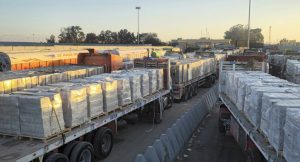
“In the last two weeks, the ICRC has received over 400 pallets of assistance items, including hygiene and household items, shelter items, forensic supplies, blankets, and more than 100 pallets of medical items. However, much more is needed at this pace and at an increased pace. This will not be an overnight fix but a response that needs assessment of needs and the ability to meet these needs without constraints.”
That’s a useful micro-indicator — aid is trickling, not flooding. Meanwhile, UNOPS underscores the UXO emergency hampering any “scale-up,” and OCHA details that northern Gaza remains effectively cut off from large convoys, even as the famine designation is centered there.
Who’s still being kept out? The NRC blasted the current regime as “mounting alarm” after repeated rejections of NGO applications to move life-saving aid into Gaza. Their message mirrors what many INGOs report privately: a process that demands more disclosure while delivering fewer permissions — and that, by design or effect, shrinks the footprint of groups with long-standing community networks. NRC
And the human picture? Practitioners in central Gaza describe the precise texture of this “managed” crisis. Bahaa Zaqout, Director of External Relations at the Palestinian NGO PARC in Deir Al Balah, sketches three hard truths:
1. Volume — roughly 986 trucks since the ceasefire began, averaging ~90/day, well below commitments (less than 15%); most are commercial and unaffordable.
“1 kilo of tomatoes costs around 15 shekels now. It used to cost only 1 shekel. Most people in Gaza do not have the purchasing power to buy these items.”
2. Content — essential items (shelter materials, medical and assistive devices, agricultural inputs) remain restricted; nutrition for children and pregnant women is nowhere near minimums.
“Virtually no materials entering Gaza that can be used to restore the infrastructure. So, Gazans are relying on fragile, improvised solutions to survive. Many of the families are currently residing in the makeshift sites. For example, the sites that are being managed by PARC are trying to establish the shelters from rubble, some plastic scraps, and some salvaged wood.”
3. Access — roads are wrecked, UXO is everywhere, and real reach is clustered into a narrow Al-Mawasi zone, pushing families into unsafe areas and responders into risk.
“The roads are destroyed. Rubble is everywhere. Unexploded ordnances are everywhere. Our access to some families is restricted.”
That aligns with OCHA’s reporting on access denials, UXO hazards, and the concentration of displacement sites with inadequate WASH and shelter.
Children and disability inclusion. Fidaa Shurrab, Resource Mobilization Manager for the Palestinian NGO Atfaluna Society in Deir Al Balah, details an excruciating subset of the crisis: destroyed rehab centers, partial hospital functionality, and a spike in disability — amputations, hearing loss — with assistive devices barred and evacuation protocols not designed for inclusion.
“The situation in the Gaza Strip since October 2023 has evolved into a catastrophic humanitarian crisis characterized by systematic attacks on civilians and civilian institutions, mass displacement, economic collapse, and a near-total breakdown of health, education, and protection systems. In this context, persons with disabilities, including children, older persons, and women, have suffered disproportionately. The war has left persons with disabilities, older people, and women facing increased exposure to injury, death, and long-term harm due to repeated forced displacement… The war has destroyed more than 92% of Gaza’s housing units and 95% of its schools, depriving the population of shelter, education, and protection. Hospitals and health facilities have been systematically targeted. Only 47% of the hospitals and 38% of primary health care centers are partially functional during the war… The war has had a devastating and disappointing impact on persons with disabilities in Gaza. Even before the conflict, their lives were difficult due to years of a blockade, poverty, and limited access to services. But since the escalation, it has become life-threatening,” Shurrab says.
This tracks with sector snapshots in OCHA’s updates and Red Cross reporting about degraded health, WASH, and protection systems.
Psychosocial harm is the hidden emergency. Shurrab cites protection cluster signals — panic attacks, sleep disorders, regression, hypervigilance — compounded by lack of assistive devices and accessible services. This is why humanitarian standards insist that “access” isn’t only about food and water; it’s also about safety, dignity, and continuity of care — especially for children and people with disabilities. As always, Gaza children are the most affected:
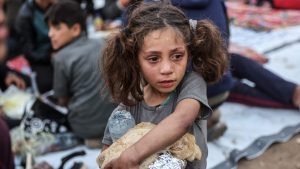
“Psychosocial damage is deep and lasting among the children. The open conflict may have temporarily ended, but the trauma is still there. Children are experiencing severe post-traumatic disorders… In order to have a significant change on the children’s well-being and psychosocial status. It’s very important to finally end the war… The children of Gaza have suffered a lot.”
“Ceasefire” as management, not protection. Sawalmeh is blunt: people have been killed during the truce, aid is still obstructed, and settlement expansion and West Bank violence tick upward with impunity — all of which collapses confidence that this pause is a bridge to rights.
“How can it be that even with a ceasefire agreement, bringing in a few toothbrushes or cooking pots or coloring books continues to be an uphill battle for international NGOs… It is time to use any possible leverage to ensure Israeli authorities lift the 18-year blockade. And end the occupation, of course. Not just in Gaza, but throughout the occupied Palestinian territory. That’s the kind of external support Palestinians need at this point.”
Amnesty’s July brief and Refugees International’s analysis reach similar conclusions: militarized or privatized “aid” models fail civilians and corrode the legitimacy of any deal.
On the “GHF model.” Khalidi’s warning is categorical: militarized distribution blurred lines between combat and relief, got people killed at aid sites, and sidelined experienced UN–INGO systems.
“[GHF] have sought to position themselves as part of this response since March. From a humanitarian perspective, their model is deeply problematic. If anything, it killed many Palestinians. It blurred the line between what military operations and humanitarian action were, and it relied on military armed contractors that are linked to defense and logistics firms. This approach undermines all of the principles that we stand for and that characterize humanitarian aid, and these principles are not negotiable. Aid cannot be delivered at gunpoint or managed through security frameworks that exclude the very organizations that have worked in Gaza for decades.”
Amnesty’s documentation of mass-casualty patterns at militarized distribution points gives that critique teeth. The message from mainstream agencies is consistent: humanitarian access must be civilian, impartial, and UN-coordinated; anything else is a red flag.
Water, rubble, disease. Zaqout adds practical detail: with purification tablets and plant fuel scarce, families tap unsafe sources; sewage treatment is largely down; shallow latrines and open disposal raise outbreak risks; and hospitals in the north triage to trauma only.
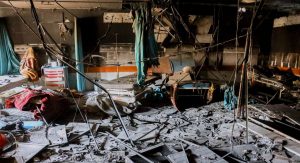
“There is no medical access at different levels in Gaza, especially in North Gaza, because most of the hospitals are operating at minimal capacity… They are not receiving sick people… only the injured… severe cases that resulted from targeting… This leaves people without any… access to these basic humanitarian services.”
OCHA’s last two updates mirror this: northern Gaza is still barely reachable, WASH is critically degraded, and shelter remains a top unmet need.
UXO isn’t a sidebar; it’s the main roadblock. After two years of bombing, explosive-remnant contamination is severe. UNOPS flags the risk as a top constraint on humanitarian scale-up; Shurrab’s case study of a child injured by an object mistaken for a toy is heartbreakingly typical of post-strike environments:
“The presence of hundreds of explosive remnants is widespread in Gaza and possesses life-threatening risks… The dense and urban nature of Gaza and heavy destruction complicate the clearance of these unexploded ordnances. We witnessed a case of a child who was injured last week. He’s a son of one of our colleagues. He was playing near his home. He touched something… a small thing that looked like a toy. He started playing with it, and suddenly it exploded. It caused him severe injuries in both of his legs and led to an amputation of his hand. Till now, he’s been under medical supervision.”
Until UNMAS and partners get heavy kit and predictable access, casualty risk and aid delivery will both suffer.
What is needed right now?
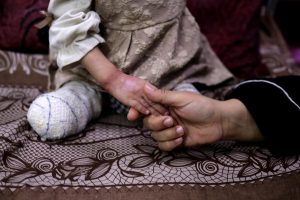
Open all viable crossings on predictable schedules — and publish daily slotting. Truces collapse when people can’t plan. Publish crossing hours, minimum daily volumes, and priority pipelines per cluster (WASH/Health/Shelter/Food). That’s the only way to convert “improvement from near zero” into actual standards. UNOPS and OCHA are built to operationalize that — if permissions are unlocked.
Suspend the new INGO registration/authorization regime for the duration of the ceasefire. If authorizations themselves are the bottleneck, pause them. Let vetted UN cluster partners move lifesaving cargo under the 2720 mechanism and cluster coordination, with spot checks that don’t expose national staff data or violate donor privacy and protection rules. NRC’s experience shows the current system is throttling aid at the warehouse door.
Let in the “infrastructure of survival,” not only rations. Pipes, pumps, chlorine, lab reagents, generators, fuel, rubble removers, spare parts — the works. Dual-use lists must be narrowed to genuine risk; right now, they’re functionally starving WASH and shelter. As Khalidi noted, Gaza won’t recover on food parcels alone; it needs the gear that restores life. OCHA’s sector notes and Al Jazeera’s infrastructure statistics point to exactly where to start.
Greenlight northern access specifically. Famine was confirmed in Gaza City during the war; OCHA reports no large convoys have reached the north since the ceasefire took effect. That’s indefensible in a truce. Stand up a dedicated northern corridor with UN security deconfliction and guaranteed daily windows.
Fund and field UXO clearance at scale. UNMAS and partners need heavy equipment, explosives specialists, and freedom of movement. Without that, families will keep getting injured heading back to homes — and aid trucks will keep stalling at rubble. UNOPS is already flagging this and can surge with the right authorizations.
Prioritize inclusive services (assistive devices, accessible WASH, rehab, and MHPSS) for people with disabilities, older people, and children. Shurrab’s testimony shows why: exclusion is lethal in emergencies. Make inclusion a cross-priority criterion, not an afterthought.
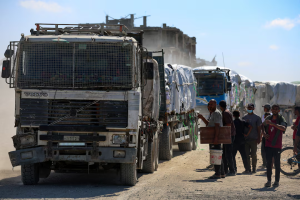
Re-center the UN-coordinated humanitarian system and stop militarized distribution. Amnesty and many agencies warn the “GHF-style” model was deadly and unlawful. Put UNRWA and cluster partners back at the core, with civilian escorts and community committees — the way Gaza’s system used to function.
Accountability alongside access. The legal stakes aren’t abstract. The UN’s genocide determination, Special Rapporteur analysis, and basic IHL require unimpeded relief and protection of civilians — in both Gaza and the West Bank. Coupling access with accountability is the only way to keep a pause from becoming policy-washed impunity.
If a ceasefire is real, you measure it by what gets in — water, fuel, pipes, clinics, permits — and by whether families can go home without stepping on an unexploded shell. Right now, the balance sheet reads like this: some aid in, many denials, little infrastructure, no predictability, high UXO risk, rising frustration.
There’s a near-term fix set that doesn’t require rewriting history: open crossings on a schedule, suspend the INGO authorization choke point, move the infrastructure of survival, surge UXO clearance, prioritize inclusion, and keep the response squarely in civilian, UN-coordinated hands. Pair it with legal accountability so that “pause” doesn’t become a euphemism for managed deprivation.
Until then, Gaza isn’t recovering. It’s enduring.


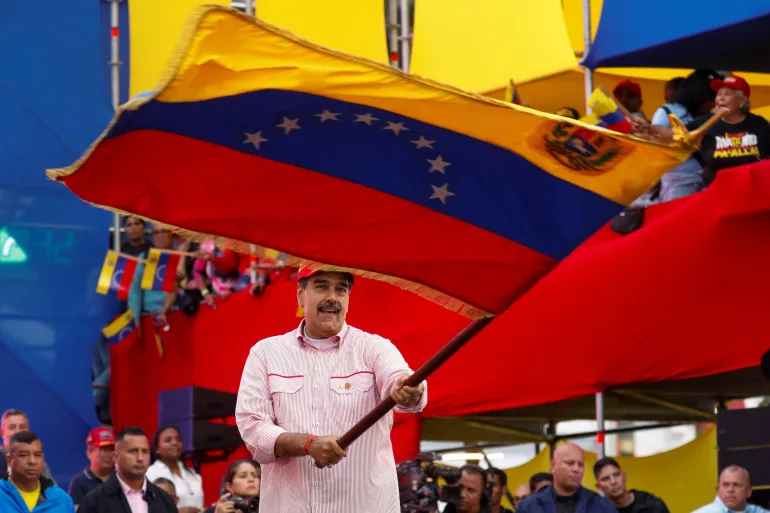

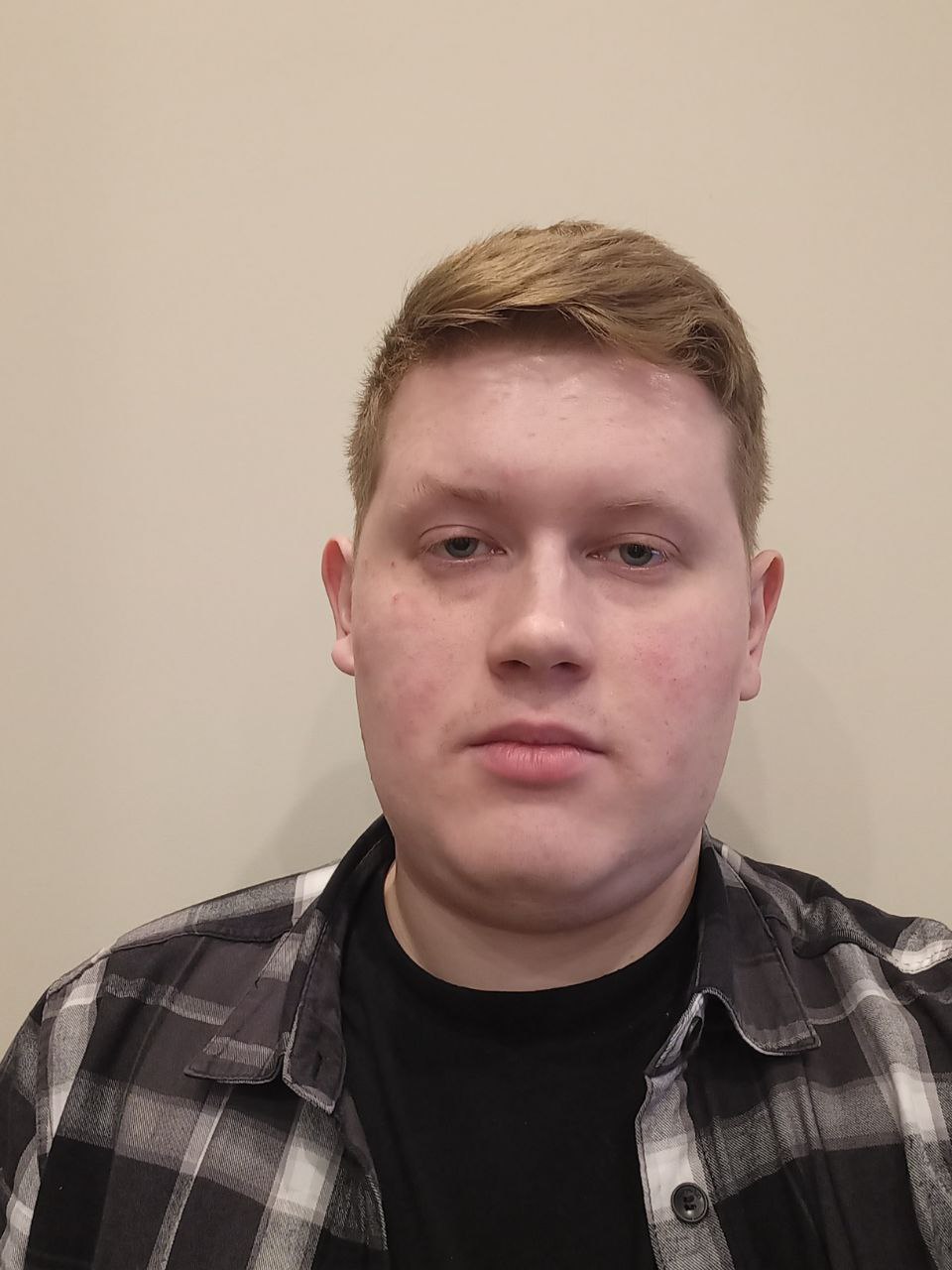

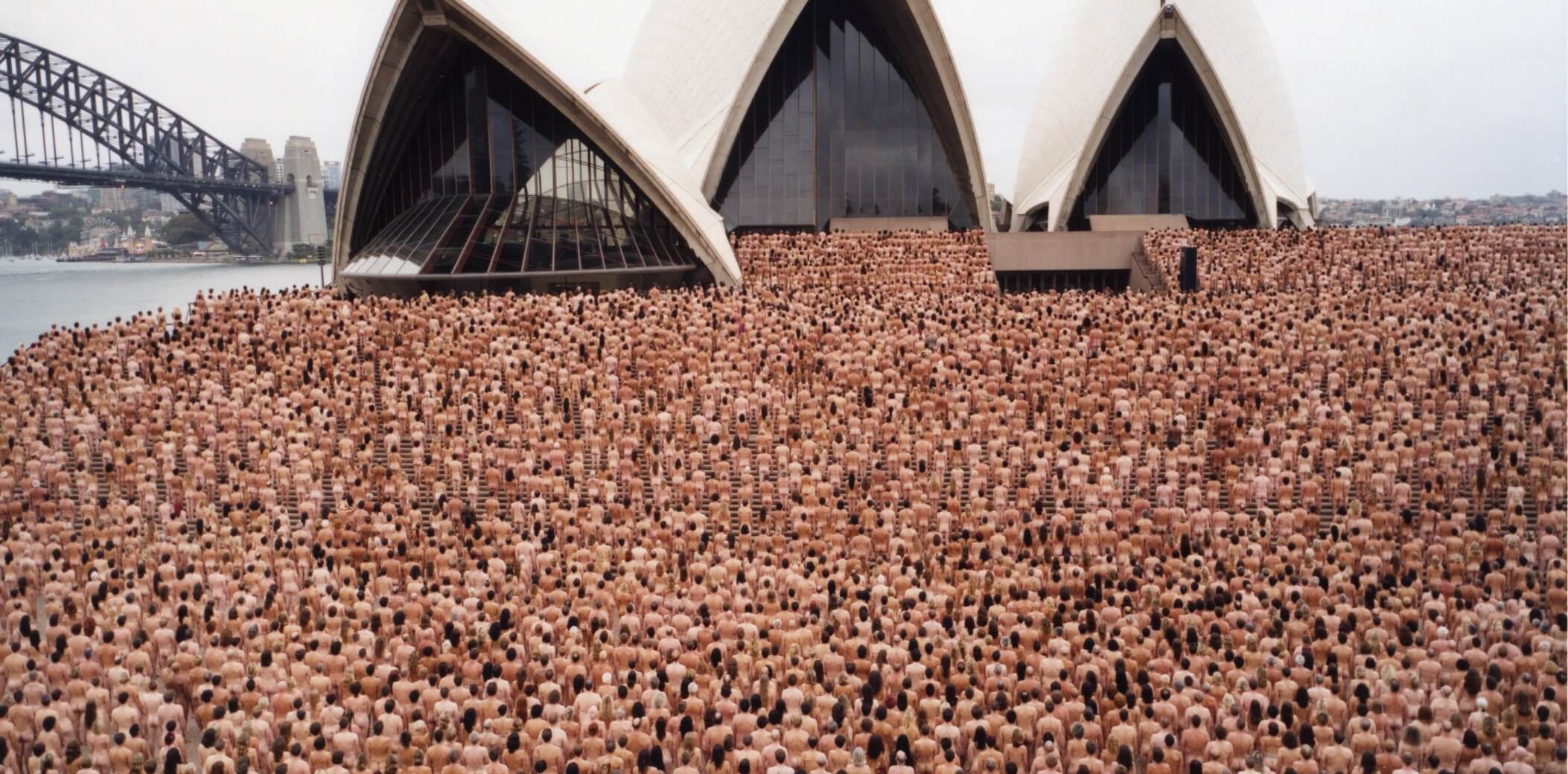
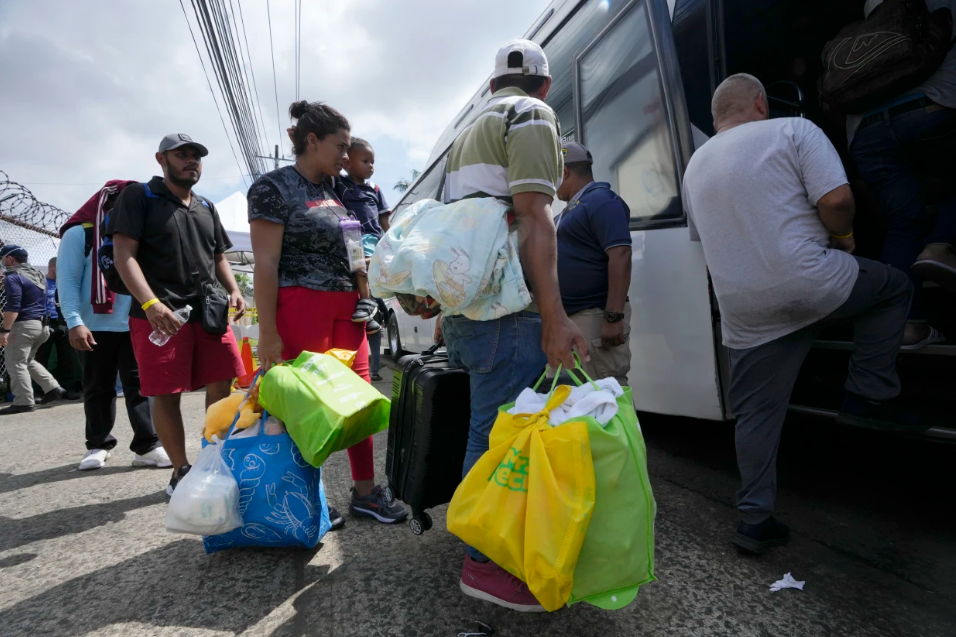
The latest news in your social feeds
Subscribe to our social media platforms to stay tuned